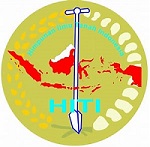LAJU INFILTRASI PADA AREAL PERTANAMAN WORTEL DI WILAYAH RURUKAN KECAMATAN TOMOHON TIMUR KOTA TOMOHON
DOI:
https://doi.org/10.35791/se.21.3.2021.36649Keywords:
infiltration rate laju Infiltrasi carrot plantation area areal pertanaman wortel Rurukan area wilayah RurukanAbstract
INFILTRATION RATE IN SOIL OF CARROT FARMING AREA AT RURUKAN, TOMOHON TIMUR DISTRICT, TOMOHON
This study aims to determine the rate of infiltration in the carrot plantation of Rurukan area of Tomohon City. Infiltration rate measurement was carried out in the field of carrot plantation areas, which were treated with mulch (with code: BM), without mulch (BT) and untreated soil (B0) using the Guelph permeameter. Observations were made twice, namely at the beginning period of planting (35 DAP), and the period of before harvest (103). Results showed that the highest infiltration rate occurred in the first observation (35 DAP) by the treatment of using mulch (BM) which was 301.2 cm/hour, and the lowest rate was at the treatment of without using mulch (BT) and the control, or without treatment (B0) which was 226.2 cm/hour. For the second observation (103 DAP), the highest infiltration rate occurred in the treatment of without using mulch (BT) which was 226.2 cm/hour and the lowest in the treatment of using mulch (BM) which was 180.6 cm/hour. More increase the period of time, more decrease the infiltration rate until it becomes constant.
Downloads
Published
How to Cite
Issue
Section
License
Authors who publish in this journal agree to the following terms:
Authors hold their copyright and grant this journal the privilege of first publication, with the work simultaneously licensed under a Creative Commons Attribution License that permits others to impart the work with an acknowledgment of the work's origin and initial publication by this journal.
Authors can enter into separate or additional contractual arrangements for the non-exclusive distribution of the journal's published version of the work (for example, post it to an institutional repository or publish it in a book), with an acknowledgment of its underlying publication in this journal.
Authors are permitted and encouraged to post their work online (for example, in institutional repositories or on their website) as it can lead to productive exchanges, as well as earlier and greater citation of the published work (See The Effect of Open Access).




